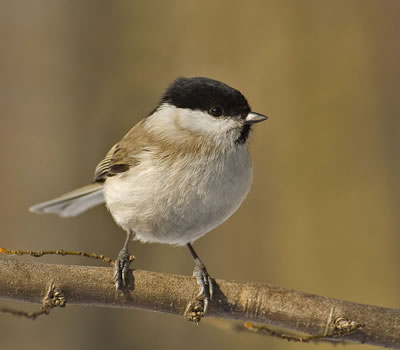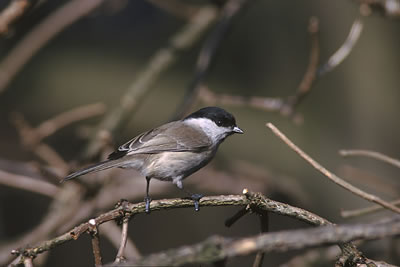Marsh Tit and Willow Tit

Facts about creatures
- Home
- Animal Classification
- Animal Habitats
- Amphibians
- Arthropods
- Bats
- Birds
- Carnivorans
- Cetaceans
- Chordates
- Crustaceans
- Dinosaurs
- Diprotodonts
- Elephants
- Fish
- Golden Mole
- Insects
- Lagomorphs
- Mammals
- Mammal Teeth
- Marsupial Mole
- Metamorphosis
- Mollusks
- Primates
- Reptiles
- Rodents
- Ruminants
- Soricomorphans
- Tenrec
- Tetrapods
- Vertebrates
Marsh Tit and Willow Tit
Marsh tits and willow tits are so similar that it was not until 1900 that they were identified as separate species.
Both birds, which are passerines, can be found in the northern and temperate parts of Europe and Asia.
It is the willow tit, rather than the marsh tit, that prefers swampy forests. This mix-up in names probably occurred before the two species were separated.
Both marsh tits and willow tits have black crowns and beige and brown feather.
The marsh tit’s crown is glossier than that of the willow tit. The willow tit has a pale patch on its wing, which the marsh tit lacks.
The two birds also have very different calls. The marsh tit makes an explosive “pi-chu!” sound, while the willow tit makes a scraping noise that sounds like a squeaking gate.

Marsh Tit
The marsh tit lives in dense, deciduous forests, often with hazel, hornbeam and beach trees. The seeds that these trees produce are an essential part of the marsh tit’s diet in winter.
In the spring, insects become an important food source.
Caterpillars are usually fed to chicks.
In the autumn, berries become an important part of the marsh tits diet.
In the winter, marsh tits may join any large mixed flock of tits that moves through their area.
Eventually, they will desert the flock as it moves on.
Many pairs spend winter and summer in the same territory.
Territories are large and are defended by males throughout the spring and summer.
By February, territories have been established and male and female pairs come together in February and March.
Marsh tits then search for nesting sites. There is intense competition for nesting sites among all tits.
The nest of a marsh tit is usually a natural hole or crevice in a tree, but sometimes in a wall or bank.
The marsh tit may take over an old nest hole of another species.
Moss, hair and fur are used to line the nest.
Usually, about five or six eggs are laid in April and May. Eggs are white with red spots.
The female incubates the eggs for about two weeks. She makes only brief trips away from the nest to find food.
Once they hatch, the chicks remain in the nest for around another two weeks, where they are fed by their parents.
Willow Tit
Willow tits often breed in damp forests, usually with many old, moss-covered tree stumps.
They are especially fond of nesting in willow trees, a fact that is reflected in the name of the species. They also nest in birch and elder trees.
Unlike marsh tits, willow tits excavate their nests, with the female doing most of the work.
They usually carry the chippings about 11 to 16 yards away from the nest and may pulverize them, so that there is no clue that a nest has been built.

The willow tit has strong, bulky neck muscles that allow it to excavate a nest effectively, with the beak being used as both a hammer and a chisel.
The nest chamber is about 8 to 12 inches deep. A carpet of fine roots, grasses and other fibers support a nest cup that is lined with fur or feathers.
Eggs resemble those of the marsh tit.
The willow tit tends to lay more eggs than the marsh tit – about eight or nine eggs in a clutch.
Willow tits take about the same amount of time incubating the nest as marsh tits. Willow tit chicks take about the same amount of time to fledge as marsh tit chicks.